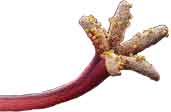Neeraja Raghavan
In most of my introductory Chemistry classes, I have found this narration to be the single most effective starter: There is a metal which is so reactive that it reacts with the water in our skin – even the moisture in the air – and burns the skin or bursts into flame in the air. It is so corrosive that it has to be preserved under oil. There is a non-metal which is a green gas at room temperature and is so toxic that the Germans rolled clouds of it towards the enemy in the Second World War.
And when this metal and non-metal combine, they produce something which we simply must add to our daily diet: else, it will not be tasty!
If this is not magic: what is? This, dear class, is what CHEMISTRY is all about! It is a subject of transformation: utterly magical!
By now, most bored expressions have changed into excited gleams…and there is hardly a slouched back that has not turned ramrod straight.
 It has been my experience that catching the attention of learners in this way keeps the interest level high – at least for some time. While I cannot deal here with all roadblocks that are inevitably encountered, I will touch upon the concept of atoms. Indeed, none less than Feynman has claimed that the single statement that would contain the most information in the fewest words…is the atomic hypothesis (or the atomic fact, or whatever you wish to call it) that all things are made of atoms.
It has been my experience that catching the attention of learners in this way keeps the interest level high – at least for some time. While I cannot deal here with all roadblocks that are inevitably encountered, I will touch upon the concept of atoms. Indeed, none less than Feynman has claimed that the single statement that would contain the most information in the fewest words…is the atomic hypothesis (or the atomic fact, or whatever you wish to call it) that all things are made of atoms.
This is an abstract – not ‘hands-on’ – topic. Most of us are taught about the existence of atoms with a ‘believe-me-I-know-it’s-true’ air from our teachers. Hard pressed as they are to perform an ‘activity’ to show the existence of atoms, it is not at all surprising that we grow up believing in atoms as we do in genies, fairies, and the like. What’s more, somewhere a faith lurks that some scientists surely saw atoms…
The author consults with Azim Premji Foundation, Bengaluru where she is Professor, Academics and Pedagogy, Azim Premji University Resource Centre. She also works as an independent educational consultant, and can be reached at neeraja.raghavan@gmail.com.
